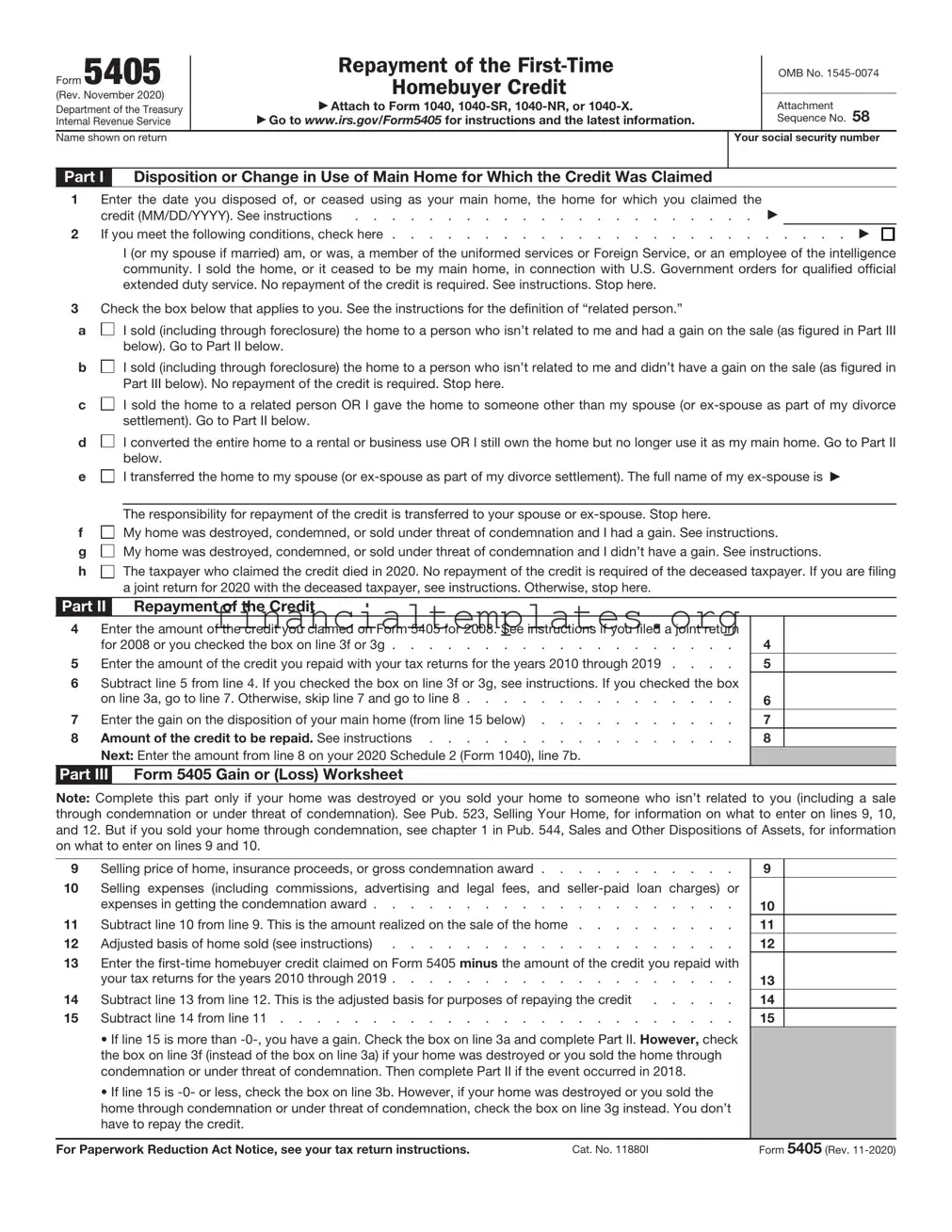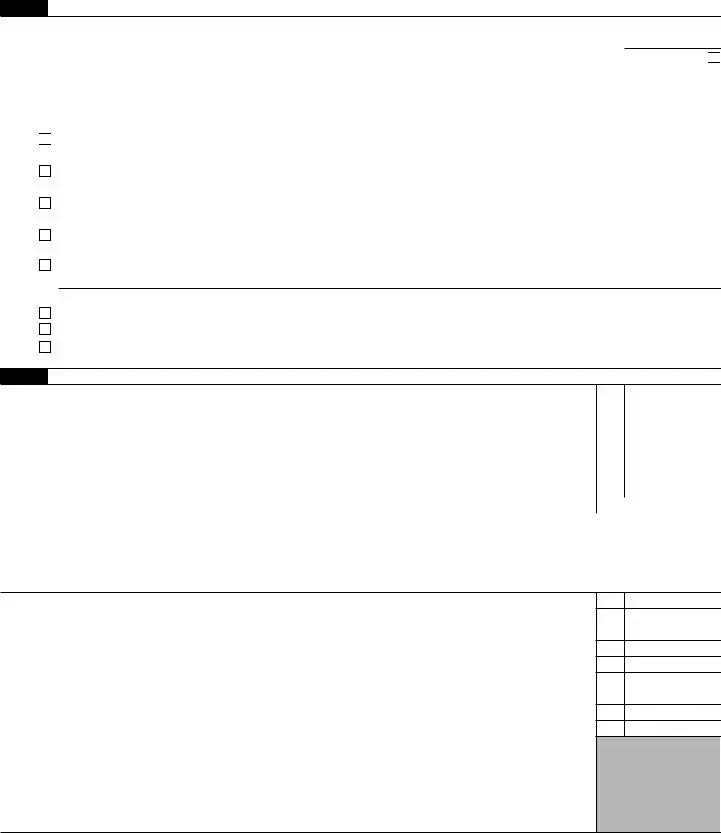The IRS Form 1040, commonly known as the U.S. Individual Income Tax Return, shares similarities with the IRS 5405 form in that both are integral to reporting specific financial information to the IRS. The Form 1040 is broader, capturing an individual's total income, tax deductions, and tax credits for the year, whereas Form 5405 focuses on the specifics related to the first-time homebuyer credit. In essence, both forms contribute vital information for the calculation of one's tax liabilities or refunds due.
Form 8863, titled "Education Credits (American Opportunity and Lifetime Learning Credits)," is akin to Form 5405 as they both pertain to tax credits, albeit for different purposes. Form 8863 is used to claim educational credits, supporting taxpayers in reducing their tax bill based on qualified education expenses. This parallels how Form 5405 is utilized for claiming a credit, although this specifically aids first-time homebuyers. Each form, therefore, plays a significant role in the financial planning of individuals, offering opportunities to lessen their tax responsibilities through specific life activities.
The IRS Form 5695, "Residential Energy Credits," is similar to the 5405 form in its focus on tax credits related to personal situations. Form 5695 allows individuals to claim credits for specific investments in home energy efficiency, such as solar panels or other renewable energy installations. Like Form 5405, which provides a tax incentive for first-time homebuyers, Form 5695 incentivizes homeowners to invest in energy-saving improvements, highlighting the tax code's role in encouraging particular economic and personal choices.
Form 8859, the "District of Columbia First-Time Homebuyer Credit," closely resembles Form 5405. It's designed for a very specific audience - homebuyers in the District of Columbia - and facilitates a tax credit similar to what Form 5405 provides on a national level. Both forms serve to ease the financial burden of acquiring a new home by offering a tax credit, although the eligibility criteria and benefits detailed might vary to cater to their respective audiences.
IRS Form 8910, "Alternative Motor Vehicle Credit," is another form that, like 5405, deals with tax credits - this time for purchasers of alternative fuel vehicles. While the focus is different, the underlying principle of offering a financial incentive to influence personal purchasing decisions for societal benefit (environmental conservation in the case of Form 8910 and housing market stimulation for Form 5405) is a common thread that ties these forms together.
Similar to the 5405 form, IRS Form 8880, "Credit for Qualified Retirement Savings Contributions," offers taxpayers an avenue to claim a credit, emphasizing the government's interest in promoting specific fiscal behaviors - in this case, saving for retirement. While Form 5405 encourages the purchase of a first home, Form 8880 incentivizes taxpayers to contribute to retirement accounts, both critical aspects of personal financial stability.
Form 8396, "Mortgage Interest Credit," also shares a connection with Form 5405 since both are involved in homeownership and financial assistance. Form 8396 permits taxpayers to claim a credit for part of their mortgage interest if they were issued a mortgage credit certificate by a state or local governmental unit or agency. Similar to the goal of the first-time homebuyer credit, this form aims to alleviate the financial load of owning a home, enhancing affordability for targeted groups.
IRS Form 8829, "Expenses for Business Use of Your Home," relates to Form 5405 through its focus on the tax implications of homeownership, although it applies to those using a portion of their home for business purposes. It allows for the deduction of expenses such as mortgage interest, insurance, utilities, repairs, and depreciation. This form, much like the 5405, acknowledges the intersection between personal living spaces and broader economic activities (in this case, small business operations), providing tax benefits accordingly.
Last but not least, Form 1098, "Mortgage Interest Statement," is similar to Form 5405 because both deal with the financial aspects of owning a home. Form 1098 is typically issued by mortgage lenders to report the amount of interest and related expenses paid by a borrower during the year. It is instrumental in preparing one's tax return, often used in conjunction with other forms like the 5405 when claiming tax benefits related to homeownership, thereby linking the processes of obtaining a home and fulfilling tax obligations.



 I sold (including through foreclosure) the home to a person who isn’t related to me and had a gain on the sale (as figured in Part III below). Go to Part II below.
I sold (including through foreclosure) the home to a person who isn’t related to me and had a gain on the sale (as figured in Part III below). Go to Part II below.